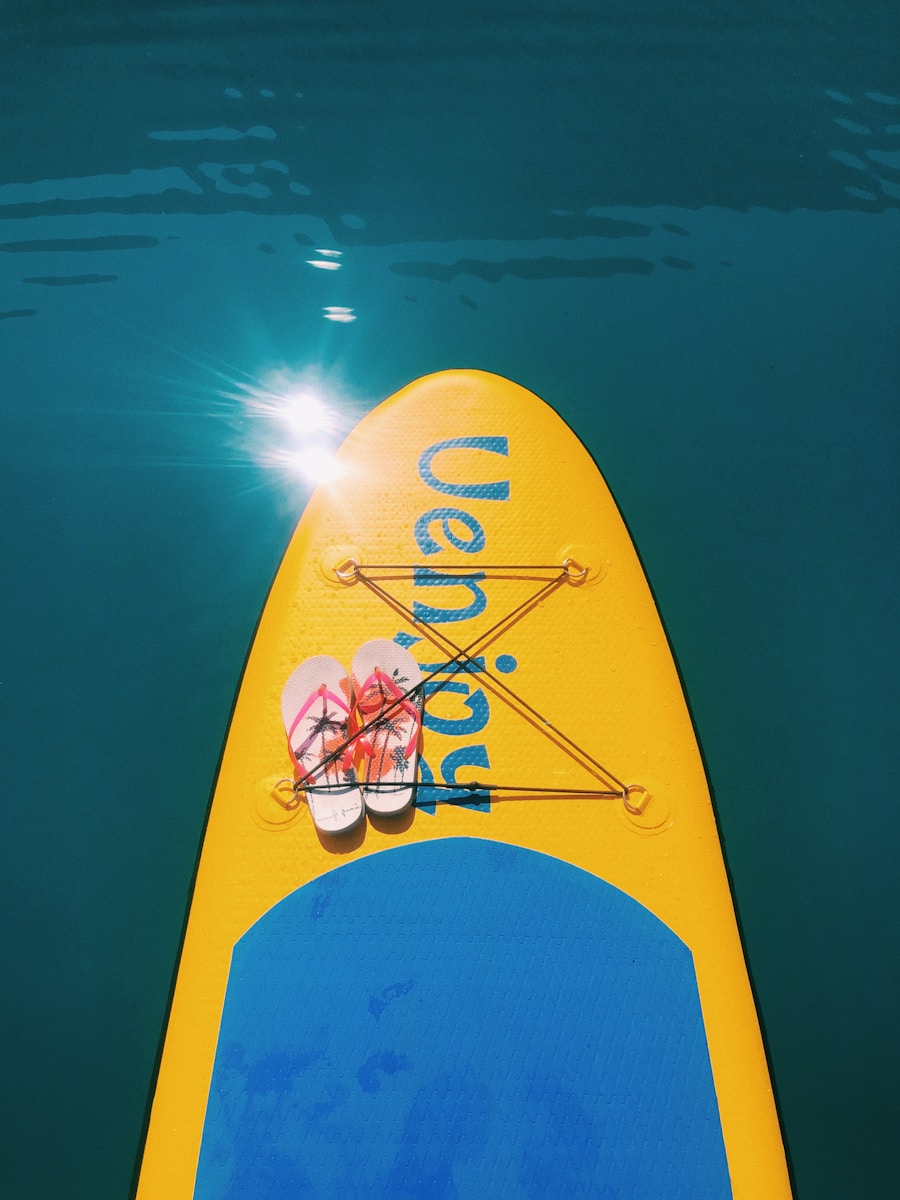Download links
How to install Surfing Makes Historic Debut at Olympics APK?
1. Tap the downloaded Surfing Makes Historic Debut at Olympics APK file.
2. Touch install.
3. Follow the steps on the screen.
Description
The inclusion of surfing in the Olympic Games marks a significant milestone for the sport, reflecting its growing global popularity and cultural significance. Officially announced in 2016 as part of the Tokyo 2020 Games, surfing’s Olympic debut was a long-awaited recognition of a sport that has roots deeply embedded in the coastal cultures of Hawaii and beyond.
The International Surfing Association (ISA) played a pivotal role in advocating for surfing’s inclusion, emphasizing its values of community, respect for nature, and personal expression. The Olympic platform offers surfing unprecedented visibility, allowing it to reach audiences that may not have been previously engaged with the sport. This inclusion is expected to inspire a new generation of surfers and enthusiasts, particularly in regions where surfing is still emerging.
The Olympics serve as a powerful stage for athletes to showcase their skills and passion, elevating the sport’s profile and potentially leading to increased participation at grassroots levels. As surfing takes its place among traditional Olympic sports, it also challenges preconceived notions about what constitutes an Olympic discipline, blending athleticism with artistry in a way that few other sports can.
Key Takeaways
- Surfing made its Olympic debut in Tokyo 2020, marking a significant milestone for the sport’s inclusion in the Games.
- Surfing has a rich history and has evolved from ancient Polynesian roots to a global phenomenon with a professional competitive circuit.
- The Olympic debut of surfing has the potential to bring increased visibility and growth to the sport, attracting new participants and fans.
- Athletes from various countries, including traditional surfing powerhouses and emerging nations, are represented in the Olympic surfing competition.
- The surfing competition at the Olympics took place at Tsurigasaki Beach, with athletes contending with varying wave conditions, showcasing the sport’s adaptability.
The History and Evolution of Surfing
Surfing’s history is rich and multifaceted, tracing back to ancient Polynesian cultures where it was not only a recreational activity but also a significant aspect of social and spiritual life. The earliest records of surfing date back to the 12th century in Hawaii, where it was known as “he’e nalu,” meaning “to slide on water.” Surfing was more than just a pastime; it was a demonstration of skill and bravery, often performed by chiefs and warriors. The sport was deeply intertwined with Hawaiian culture, symbolizing a connection to the ocean and the natural world.
As Western explorers arrived in the Pacific Islands in the 18th century, they documented the practice of surfing, which began to capture the imagination of people outside of Hawaii. By the early 20th century, surfing had made its way to California, where it evolved significantly. The introduction of lighter materials for surfboards, such as balsa wood and later polyurethane foam, revolutionized the sport, making it more accessible to a broader audience.
The 1950s and 1960s saw a cultural explosion around surfing, fueled by films like “Gidget” and the rise of surf music. This era not only popularized surfing as a leisure activity but also established it as a symbol of youth rebellion and freedom.
The Impact of Surfing’s Olympic Debut on the Sport

Surfing’s debut at the Olympics has profound implications for the sport’s future. One immediate effect is the potential for increased funding and sponsorship opportunities. As surfing gains recognition on an international stage, brands that have long supported the sport are likely to invest more heavily in athletes and events.
This influx of resources can lead to improved training facilities, coaching programs, and competitive events, ultimately raising the overall standard of the sport. Athletes will have access to better equipment and support systems, which can enhance their performance and competitiveness on a global scale. Moreover, Olympic recognition can help legitimize surfing as a professional sport.
While competitive surfing has existed for decades through various tours and championships, being part of the Olympics elevates its status in the eyes of mainstream sports fans and media. This legitimacy can attract new audiences who may not have previously engaged with surfing competitions. Additionally, it opens doors for collaborations with other sports organizations and potential inclusion in multi-sport events beyond the Olympics, further solidifying surfing’s place in the global sports landscape.
The Athletes and Countries Represented in Surfing at the Olympics
| Athlete | Country | Result |
|---|---|---|
| Italo Ferreira | Brazil | Gold |
| Kanoa Igarashi | Japan | Silver |
| Owen Wright | Australia | Bronze |
| Carissa Moore | United States | Gold |
| Bianca Buitendag | South Africa | Silver |
| Amuro Tsuzuki | Japan | Bronze |
The Olympic surfing competition features a diverse array of athletes from various countries, showcasing the global nature of the sport. Athletes from traditional surfing powerhouses like Australia, the United States, and Brazil are expected to dominate, but the inclusion of nations with emerging surf cultures adds an exciting dynamic to the competition. Countries such as Japan, which hosted the Tokyo 2020 Games, have invested significantly in developing their surfing talent, resulting in a new generation of competitive surfers who are eager to make their mark on this prestigious stage.
The representation of female athletes is particularly noteworthy in Olympic surfing. The inclusion of women’s events highlights the growing recognition of female surfers who have long been trailblazers in their own right. Athletes like Carissa Moore from Hawaii and Stephanie Gilmore from Australia are not only exceptional competitors but also role models who inspire young girls around the world to pursue their passion for surfing.
Their presence at the Olympics serves as a powerful statement about gender equality in sports and encourages greater participation among women in surfing.
The Venue and Conditions for Surfing at the Olympics
The choice of venue for Olympic surfing is critical to ensuring fair competition and showcasing the sport’s unique characteristics. For Tokyo 2020, the competition was held at Tsurigasaki Beach in Chiba Prefecture, chosen for its proximity to Tokyo and its reputation for consistent surf conditions. However, organizing an event like this comes with challenges; surf conditions can be unpredictable due to weather patterns and tidal changes.
The ISA worked closely with local authorities to monitor conditions leading up to the event, ensuring that athletes would compete under optimal circumstances. The natural environment plays a significant role in shaping the experience of both competitors and spectators. Unlike traditional Olympic sports held in controlled environments, surfing relies on nature’s whims—waves can vary dramatically from day to day or even hour to hour.
This unpredictability adds an element of excitement but also requires athletes to be adaptable and skilled at reading ocean conditions. The use of technology has become increasingly important in this regard; surfers now utilize advanced forecasting tools to prepare for competitions, allowing them to strategize based on expected wave patterns.
The Future of Surfing in the Olympics

Advocating for Ocean Conservation
Additionally, as environmental concerns become more pressing globally, there is potential for surfing to advocate for ocean conservation efforts through its platform within the Olympics. The evolution of competitive formats may also shape how surfing is presented at future Games.
Innovating Competitive Formats
While traditional heat formats are effective, there is room for innovation that could enhance viewer engagement. For instance, incorporating team events or mixed-gender competitions could add excitement and showcase camaraderie among athletes. Furthermore, as technology continues to advance, we may see new ways to enhance spectator experiences both on-site and through broadcast media.
A Sport with a Deeper Meaning
In conclusion, while surfing’s journey into the Olympic realm is still in its infancy, its potential impact on both the sport itself and its global community is immense. As athletes prepare for future competitions under this prestigious banner, they carry with them not only their personal aspirations but also the hopes of countless fans who see surfing as more than just a sport—it’s a way of life that embodies freedom, creativity, and connection to nature.
If you’re a fan of surfing and interested in the Olympics, you may want to check out this article on info/2025/02/28/raih-kemenangan-besar-dengan-taya365-lottery/’>how to achieve great victories with Taya365 Lottery.
It discusses the excitement and thrill of winning big prizes through the lottery, which can be just as exhilarating as catching the perfect wave. Surfing and lottery may seem like unrelated topics, but both offer the opportunity for unexpected triumphs and unforgettable experiences.
FAQs
What is surfing in the Olympics?
Surfing is a sport that involves riding ocean waves on a surfboard. In the Olympics, surfing is a competitive event where athletes showcase their skills in riding waves.
When was surfing introduced to the Olympics?
Surfing was introduced to the Olympics for the first time in the 2020 Tokyo Olympics. It was included as part of the Games’ efforts to attract a younger audience and promote more diverse sports.
How is surfing judged in the Olympics?
Surfing in the Olympics is judged based on the athletes’ ability to perform maneuvers on the waves, their style, and their overall performance. Judges consider factors such as speed, power, and flow in determining the scores.
What are the rules and regulations for surfing in the Olympics?
The rules and regulations for surfing in the Olympics are set by the International Surfing Association (ISA) and the International Olympic Committee (IOC). These rules govern aspects such as wave selection, time limits, and scoring criteria.
Which countries are known for their strong surfing teams in the Olympics?
Countries with strong surfing traditions, such as Australia, the United States, Brazil, and Hawaii, are known for their competitive surfing teams in the Olympics. These countries have produced many world-class surfers who have excelled in international competitions.
What are the different events in surfing at the Olympics?
In the Olympics, surfing consists of men’s and women’s individual events, where athletes compete in heats to advance through the rounds. The competition takes place at a designated surf break, and athletes are judged based on their performance in the waves.





